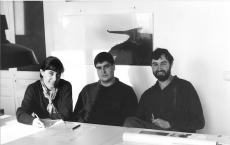
Email: emanuelealbertocirello.98@gmail.com
Total Article : 76
About Me:I am a Year 13 student which aspires to be an architect. I am interested in anything I don't yet know, and I mostly write about art, politics , Italian culture and inspirational people, although I will try to write for as many categories possible, just to test myself and get to know more things.

The Pritzker Prize is an annual award to honour a singular or a group of architects that have, at any point during the course of their career, who have built works that show talent, vision and commitment and have made valuable contributions for communities and the built environment through architecture.
The world’s most influential and famous architects have been awarded this prize, such as Norman Foster, Renzo Piano, Zaha Hadid and Kenzo Tange to name a few. However, three Catalan architects who have built little outside their home region of northeast Spain have been awarded the 2017 Pritzker prize, the world’s most prestigious award for this field.
For an award that usually praises large-scale projects such as opera houses, museums and churches, it is a radical change to be awarded to a relatively unknown trio, who have dedicated their career to improve their own urban areas silently behind the scenes, producing beautifully made buildings despite their small business practice.
Rafael Aranda, Carme Pigem and Ramon Vilalta, founders of RCR Arquitectes, in the small town of Olot in 1988, have built a reputation for making projects that show great sensitivity to local context, taking particular care with how their architectural visions are sited in the landscape and masterfully using materials to play with light, shade, mass and fragility. These are the unlikely winners of the 2017 Pritzker Prize.
Architect Glenn Murcutt, chair of the Pritzker jury, said. “They’ve demonstrated that unity of a material can lend such incredible strength and simplicity to a building. The collaboration of these three architects produces uncompromising architecture of a poetic level, representing timeless work that reflects great respect for the past, while projecting clarity that is of the present and the future.”
Their Bell-Lloc winery, built in 2007 in Palamós, Girona, lies down in the landscape, bringing people on a journey into an underworld of winemaking, dug under a folded steel roof, with angled walls that give the feeling of entering a burial site, enlightened by delicate and gentle light that expands from room to room.
The Tossols-Basil athletics track, 2000, Olot, Girona is carefully located and immersed into the landscape that it is merely visible. Runners using the facility appear and disappear among the vegetation as they run and run around the track, while spectators, if any, are welcomed on terraces and embankments created by the curves and natural geology of the surrounding environment. Their architecture is visibly characterised by an intimate relationship with the built environment and the natural environment, with structures almost being fixed in their natural location.
Ramon Vilalta affirmed in an interview “We have always tried to flee from fashions, or make architecture located in a precise moment. […] We believe that architecture is construction and that construction must be well done. Then it will last.” Hence, the relationship of their projects with natural elements is not only integral, but also essential. Many architects have started to introduce such concepts of architecture being so intimate with nature. Norman Foster has recently been supportive of “Striving simplicity”, believing that in our modern society, with our increasing responsibility towards the environment, we need to approach architecture in new ways that adapt our needs with those of the environment around us.
Image credit: http://www.architecturalrecord.com/articles/12315-pritzker-prize-goes-to-rafael-aranda-carme-pigem-ramon-vilalta-of-rcr-arquitectes

0 Comment:
Be the first one to comment on this article.